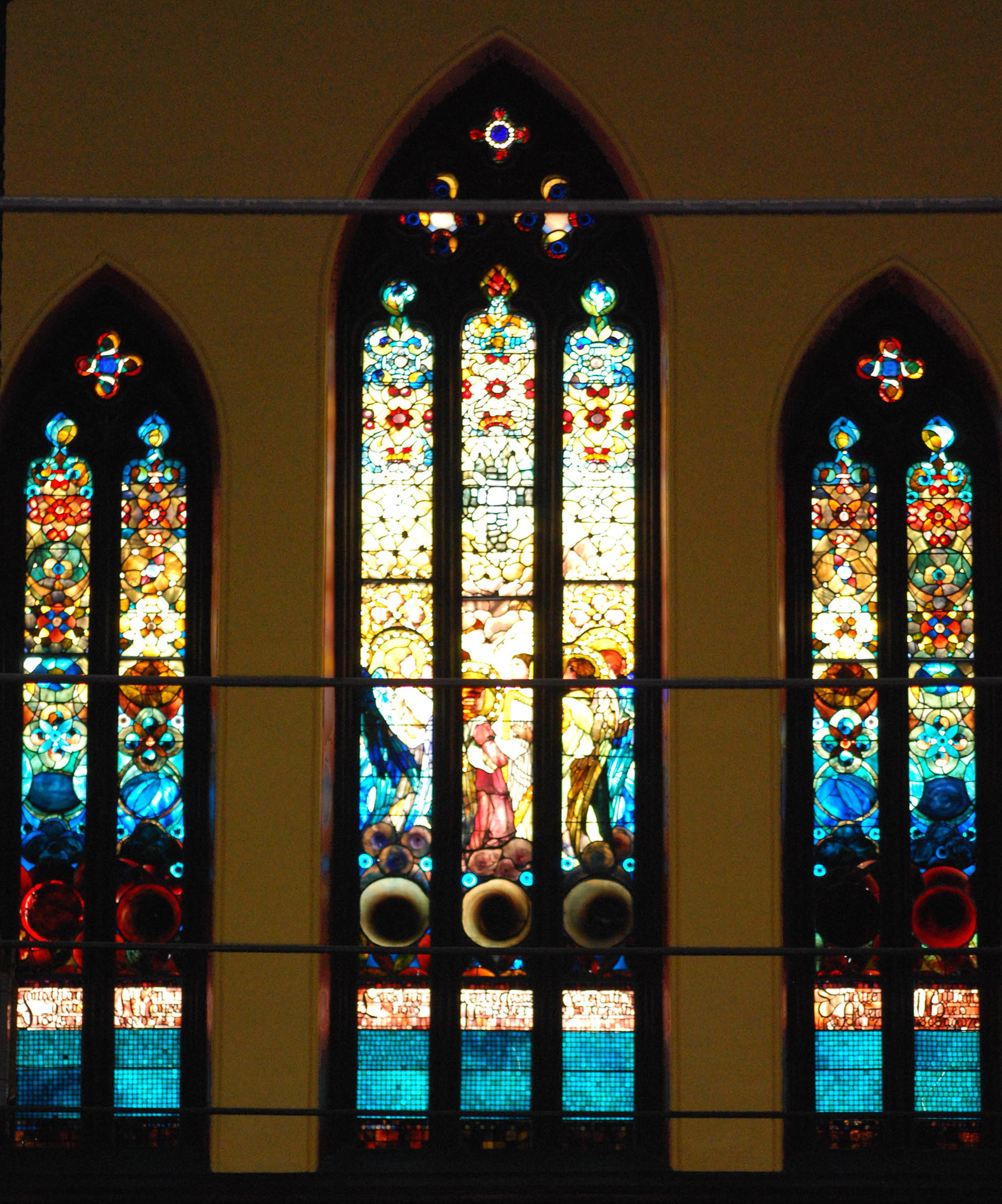
In response to our March article about Louis Comfort Tiffany’s White House renovations, Red, white, and Tiffany blue by Martin Filler, we received a tip from a reader, Martin C. Langeveld, a historian at the First Church of Christ in Pittsfield, Massachusetts. Langeveld writes:
Louis Comfort Tiffany’s legendary and unfortunately lost White House Entry Hall screen has an immediate predecessor that is still accessible in all its original splendor. The White House screen was executed during October and November of 1882 and unveiled in December. But in June 1882, Tiffany’s Allen Memorial Window had been installed at the First Church of Christ in Pittsfield—a monumental window, 16 feet wide by 18 feet 8 inches high. Like the White House screen, the Allen window is a largely abstract work. The relatively small central motif of an angel choir surmounted by a cross is surrounded by decorative patterns of opalescent glass and “jewels”—rough, unpolished nuggets of glass as large as a grapefruit. It is among the earliest of Tiffany’s many windows. The artist himself visited Pittsfield in October to inspect its installation.
The Allen window memorializes Jonathan (1773-1851) and Eunice Williams Allen (1792-1868), the parents of Mrs. Henry G. Marquand of New York City. Her husband was a banker, a prominent patron of the arts, and the second president of the Metropolitan Museum of Art. The connection between the White House screen and the Allen window is undoubtedly that Tiffany’s father, Charles Lewis Tiffany, was also a primary patron of the Metropolitan Museum of Art, as well as a friend of President Chester Alan Arthur (he served as a pallbearer at Arthur’s funeral in 1886); both were members of the Union League Club. It is plausible that the President viewed designs for the Pittsfield window before settling on Tiffany for the White House commission. Arthur himself was memorialized in the Berkshires with an 1888 Tiffany window placed by his friends in Trinity Church in Lenox, Mass., adjacent to Pittsfield.
